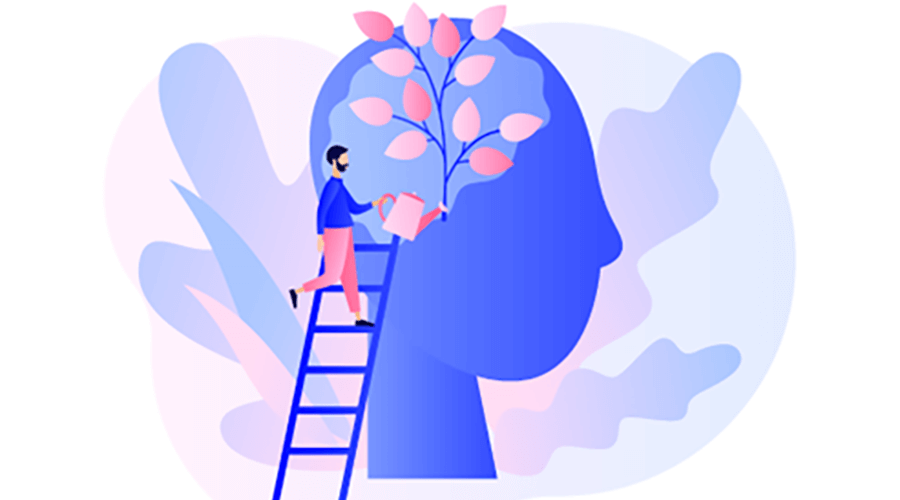Neurotherapy Tools for
Emotional Regulation and
Improved Decision Making
See also: Self-Regulation
Neurotherapy offers a range of tools for training the brain and improving overall well-being. Studies have shown it can improve attention, memory and mood, amongst many other benefits.
Neurotherapy tools provide targeted support, promoting a better understanding and management of emotions on one hand, and sharpening cognitive processes for more informed choices on the other. Together, they help individuals improve their emotional well-being and improve decision-making skills.

What is Neurotherapy?
Neurotherapy, also known as neurofeedback, is a form of biofeedback that focuses on the real-time monitoring and regulation of brain activity. It enables individuals to gain insights into their own brain functioning and, through training, develop the ability to self-regulate and optimise their cognitive processes.
Neurofeedback involves the use of specialised equipment, typically electroencephalography (EEG), to provide real-time feedback on brain activity. By monitoring and training specific brainwave patterns, neurofeedback enhances various aspects of cognitive functioning, emotional regulation, and overall well-being.
Neurofeedback Training for Emotional Regulation
Neurofeedback is a valuable tool for emotional regulation and reducing stress as it enables us to gain insight into the brain's real-time activity when responding to triggers.
Through neurofeedback, individuals can identify specific brainwave patterns associated with certain emotional triggers. With the guidance of a trained therapist or neurofeedback practitioner, clients can learn to regulate these patterns, reducing the intensity and duration of emotional responses. Over time, this can lead to better emotional control and a more balanced, stable state of mind.
Neurofeedback Training for Improved Decision Making
Sound decision making hinges on the clarity, focus, and cognitive resources available at the time a choice is made. Neurofeedback can significantly improve these aspects, thereby increasing the likelihood of making informed and effective decisions.
During neurofeedback sessions, individuals learn to optimise their brainwave patterns, leading to improved focus. This allows for better information processing and analysis. By regulating brain activity, individuals may also experience reduced impulsivity, which is often a barrier to well-thought-out decision making.
The enhanced cognitive functions obtained through neurofeedback also contribute to better risk assessment, problem-solving, and goal setting. Individuals may find that they become more adept at considering long-term consequences and weighing up options, resulting in decisions that align with their values and goals.
Neurotherapy Tools and Techniques
Neurofeedback is a leading neurotherapy tool, primarily using EEG technology. It involves attaching electrodes to the scalp to monitor and provide feedback on brainwave activity.
There are several variations of neurofeedback techniques, including:
Alpha-Theta Neurofeedback: This method is often used to promote relaxation and emotional regulation. It encourages the production of alpha and theta brainwaves associated with a calm and meditative state.
SMR (Sensorimotor Rhythm) Neurofeedback: SMR neurofeedback focuses on enhancing focus and reducing hyperactivity. It trains the brain to produce SMR brainwave patterns.
Beta Neurofeedback: Beta brainwave patterns are associated with alertness and mental clarity. Beta neurofeedback aims to enhance these patterns for improved cognitive functioning.
Delta Neurofeedback: Delta waves are linked to deep sleep and relaxation. Delta neurofeedback can help achieve a state of rest and recovery.
The Process of Neurofeedback Therapy
Step 1: Initial Consultation
Start by contacting a certified neurofeedback training clinic. This initial consultation allows you to learn about the clinic and its approach while providing the clinic with insights into your needs and whether neurofeedback therapy is right for you.
Step 2: Tailored Training Plan
A personalised brain training program is created, using a QEEG brain map, which involves attaching sensors to a cap to capture your brain's electrical activity. This data forms the foundation for your customised training program, and offers a chance to meet your therapist to understand what to expect.
Step 3: Neurofeedback Sessions
In therapy sessions, your therapist guides you while a sensor cap measures your brain activity. Real-time feedback is provided through visuals, games, or music, helping you learn to self-regulate your brain activity. Your therapist will monitor your progress and adjust the training to help you achieve your unique goals.
Long-Term Benefits of Neurofeedback Therapy
The benefits of neurofeedback therapy extend beyond the therapy room. With consistent practice and guidance, you can develop lasting improvements in emotional regulation and decision-making skills. This not only enhances quality of life but also equips you with valuable tools for navigating future challenges.
Practical Application of Neurofeedback
To make the most of neurofeedback therapy, it's essential to integrate its principles into your daily life. Here are some practical tips:
Consistency: Attend regular neurofeedback sessions to maintain and further develop your emotional regulation and cognitive skills.
-
Mindfulness and Self-awareness: Practise mindfulness to become more attuned to your emotions and thought processes. This self-awareness can help you apply your neurofeedback training to real-life situations.
Goal Setting: Identify specific emotional or cognitive goals you want to achieve through neurofeedback and work with your therapist to tailor your training accordingly.
-
Healthy Lifestyle: A balanced diet, regular exercise, and sufficient sleep contribute to better brain health and can complement the effects of neurofeedback.
By following these practical applications, you can gain more control over your emotions and make better decisions. With the right guidance and commitment, neurofeedback can be a transformative tool in your journey toward all-round well-being.
About the Author
Brainworks Neurotherapy is a leading neurofeedback therapy practitioner with over 16 years of experience. James Roy, the technical director, developed a unique neurofeedback platform that can be used from the comfort of your own home, and the company offers in-person and remote neurofeedback therapy.
The team at Brainworks hold qualifications from a range of institutions, including the Wurrke Institute of Neurotherapy, and are affiliated with the Society of Applied Neuroscience. Their area of expertise includes children’s psychology, medical neuroscience, and interpersonal neurobiology.
Their neurofeedback training helps individuals enhance brain function and address challenges like ADHD, anxiety, and sleep disorders. They've also previously collaborated with sports teams, such as Team GB, to enhance sports performance.
